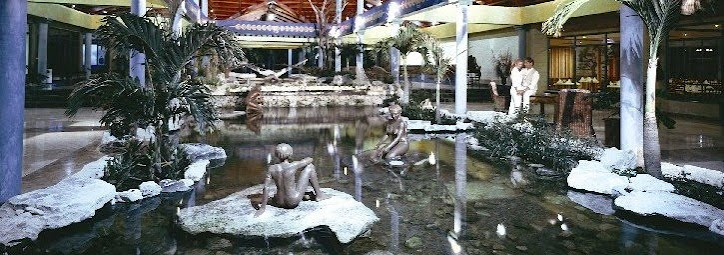Tuesday, September 20, 2016
Impressive natural landscapes at Alejandro de Humboldt National Park:
In the 25th session of the World Heritage Committee held December 11-16, 2001, in Helsinki, Finland, the United Nations Organization for Education, Science, and Culture (UNESCO)included on its list of World Heritage Sites Cuba's Parque Nacional Alejandro de Humboldt (PNAH), home to the Caribbean's greatest biodiversity, with the largest number of endemic species, and among the most important in the world with these characteristics.
Additionally cited by UNESCO as motivation for the inclusion was the fact that the area is one the region's principal evolutionary centers, a bio-geographical bridge and refuge for Caribbean and American flora and fauna from the Miocene-Pleistocene era (fundamentally the Ice Age), as well as the site of important habitats which support terrestrial and fresh water biodiversity in Cuba, and the development of ecological communities.
Alejandro de Humboldt National Park covers 70,680 hectares (706.8 km²) on the eastern end of the island's northern coast, in the Guantánamo municipalities of Baracoa, Yateras, and Manuel Tames, plus two in Holguin: Sagua de Tánamo and Moa. It is composed of four conservation departments or sectors: Baracoa, La Melba, Ojito de Agua, and Cupeyal del Norte, with it's administrative center in Guantánamo. A total of 22 communities are linked to the park, seven of these within its boundaries.
The park is Cuba's most important protected area, not only because of its natural wealth and endemic species, but also because found here are the country's remaining, well preserved mountain ecosystems, which form the core of the Cuchillas del Toa Biosphere Reserve.
A CUBAN NATURAL LANSCAPE
Created in 1996, with the name of the eminent German scientist Alejandro de Humboldt (described by José de la Luz y Caballero as the second discoverer of Cuba) the park is distinguished by its extensive tropical forests and ecosystems, including well preserved, ecologically healthy, marine areas.
Experts estimate that it is home to 2% of the planet's plant species, over 900 of which are endemic (a third of all plants found on the entire Cuban archipelago), many of them exclusive to this particular region, and some inhabiting only a few dozen square meters here.
Among these endemic botanical jewels are five carnivorous plants; two from the genera Podocarpus and Dracaena, some of the most primitive species in the Plant Kingdom, and one in the Buxus genus, thought to be extinct.
Located within the park are 16 of the 28 plant regions present in Cuba, including three types of Cuban rainforest: the low altitude, submontane, and montane; in addition to others like the low altitude cloud forest, the broad and needle leaf evergreen, gallery, spiny scrub, mangrove, and the plant systems existent on the coastline which can be sandy or rocky, and include mogotes.
Precisely the combination of mountains with forests, valleys, mesas, clear rushing rivers; along side coral reefs, pocket bays, and keys; as well as springs, lakes, and waterfalls, in the cool, rainy climate typical of the territory, make this national park one of Cuba's most impressive natural landscapes, carefully preserved to protect the delicate ecosystem and the species living there.
Its woods serve as a refuge for a great number of endemic species, including both resident and migratory birds, like the endangered cotorra and catey, while its marine ecosystems are home to a significant colony of manatees. Rare species of amphibians, reptiles, and fish are found throughout the area. / Granma
Subscribe to:
Posts (Atom)




